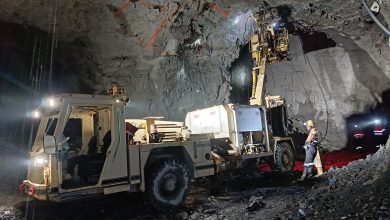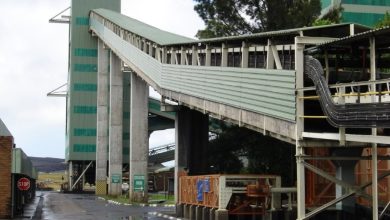
Sustainable Organisational Performance, People Management and Operational Optimisation for Mining Supervisors
Competent Supervisors, Profitable Mines
OIM Consulting’s ‘Coaching to Performance” is a Supervisory & Operational Leadership Development programme designed to develop leadership skills in employees holding supervisory positions in mining companies. The consultancy has established that effective and efficient supervisors enable organisations to improve productivity which translates into increased profits.
By Jimmy Swira
There is a need for a mindset shift in the mining sector in 2023: Only effective and efficient supervisors have to be assigned leadership roles. This is one of the readily available ‘low-hanging fruits’ that mining companies can utilise to achieve long-term sustainability and increase profitability.
Cape Town-based business management consultancy, OIM Consulting, reiterates this advice to mining companies in the second interview with Mining Business Africa (the first one was in the second half of 2021). This is in the wake of developments unfolding in the mining sector that have even more underlined the need for proactive supervisors at the coal face of operations.
Currently, mining companies are grappling with high operating costs which are impacting the bottom line. One of the sure-fire approaches to offsetting this challenge within their grasp is through increased productivity, which effective leadership at the supervisory level is fundamental to its realisation.
OIM Consulting is committed to playing a part in making supervisors more capable by imparting critical leadership skills. Consequently, it devised an on-the-floor coaching framework called ‘Coaching to Performance”, a Supervisory & Operational Leadership Development programme.
In an update to the industry, OIM Managing Director, Arjen de Bruin, recommends ‘Coaching to Performance’ as a more relevant intervention that can enable mining companies to fill the gap for effective and efficient supervisors. Without a doubt, the relevance of the solution can be appreciated better when the scale of leadership challenges it addresses is analysed thoroughly.
The scale of leadership challenges
Ideally, a supervisor should make everything happen in an organisation. However, unfortunately, that is not always the case, according to findings of a survey OIM Consulting conducted across industries. “At a baseline, only about 19% of supervisors have the required competencies for their job, and 78% of them have an “unstructured approach” to their work,” de Bruin narrates. OIM found that planning and organising are among the least developed competencies of supervisors, besides the ability to lead and develop their teams, and the inability to analyse and problem-solve.
The root of the problem is that employees who have technical competencies are thrown into the deep end by being entrusted with supervisory roles. The main flaw with this approach is the assumption that their technical competencies automatically make them capable leaders.
Unfortunately, most supervisors would assume their positions while not fully understanding their roles. Typically, in the context of mines, they would come to a shift without planning. As a result, inevitably, more often than not, they tend to be more reactive to issues. “Instead of leading as expected, supervisors play a ‘fire fighting role’ – perpetually solving problems that could have been avoided with proper planning in the first place. Eventually, it becomes a vicious circle, as the problem never gets solved. As fire fighting is an erratic task, there is no progress in pertinent issues,” laments de Bruin, adding that nine times out of ten, the manager has to keep intervening and help the supervisor, which distracts the manager from carrying out their duty.
The impact of unqualified supervisors in mining operations should not be underestimated, as it has a significant bearing on the bottom line. A case in point is the spell of the commodities boom, during which some mining companies may have got a huge turnover. Nonetheless, due to ineffective supervisors, they may have incurred huge costs per tonne, narrowing profitability.
‘An empowered supervisor, a driven team’
Thus, to tackle these enormous challenges, a mining company has to ensure that the people appointed in supervisory roles are assertive – adept in planning, leading and implementing, de Bruin suggests. “The supervisor is the ‘culture-carrier‘ so he has to break down strategy so that individual teams understand and are willing and focused to be part of it. A supervisor needs to sell an organisation’s value, vision and mission to their team. Every member has to know what it’s in for them and the benefits of working towards one goal.”
The supervisor’s role hinges on the Three I’s – ‘Insight, Influence and Impact’. “The more insight, the more influence on the individual, the more impact you have,” de Bruin defines.
Ultimately, for supervisors to execute their roles effectively, the following four pillars are critical:
- Efficient and effective processes
- Managed processes
- Right structures in place
- Leadership must be capacitated to deliver processes
‘There is no silver bullet. Make sure the four pillars happen. Without the supervisory role, this would be farfetched. An empowered supervisor creates a driven team,” stresses de Bruin.
What ‘Coaching to Performance’ entails
OIM Consulting recognises that supervisors are an essential component in meeting daily targets. Accordingly, its ‘Coaching to Performance’ solution is aimed at showing supervisors that if they plan their day better, and if they had a more effective team meeting, and used visual and shift management books correctly, they would then be able to manage their teams much more effectively.
‘Coaching to Performance” involves coaching the supervisors on-site and showing them how to do their work in a more effective and organised way for a more consistent benefit. Results-oriented, ‘Coaching to Performance’ entails implementing a few development aspects and measuring them. “We implement the framework, and then we measure to see if success happens because, without measurement, you don’t know if things have improved,” de Bruin elaborates.
The individual’s performance is base-lined through a three-pronged approach: a development needs assessment, role assessment and team targets. “We look at the key performance indicators to get a picture of the individual’s targets. Once the baselining has been completed, we know how competent the individual is, how they execute tasks and what their targets are and whether these are achieved consistently,” Debruin explains what this involves.
Potent long-hanging fruit
On the whole, in the current environment mining companies have to seek avenues that can help them realise more value from their assets in the long term. Developing effective and efficient leadership skills in supervisors through initiatives like “Coaching to Performance’ is one of the potent low-hanging fruits they can use to increase profitability in the face of escalating operating costs.
On a different note, OIM informs mining companies that, it recently unveiled a Target Attainment Programme (TAP), a short-term programme, to help them to reach targets within 90 days. As part of the programme, OIM first performs root-cause analysis and implements what is termed an ‘Instructive coaching programme’. “We push and help where we can. By the end of the 90 days, the programme would have achieved the desired results,”
However, while the TAP‘s objective may be reached, the programme may not be sustainable in the long term. And so, this may necessitate the implementation of “Behavioural Coaching” under the Coaching to performance” programme.






